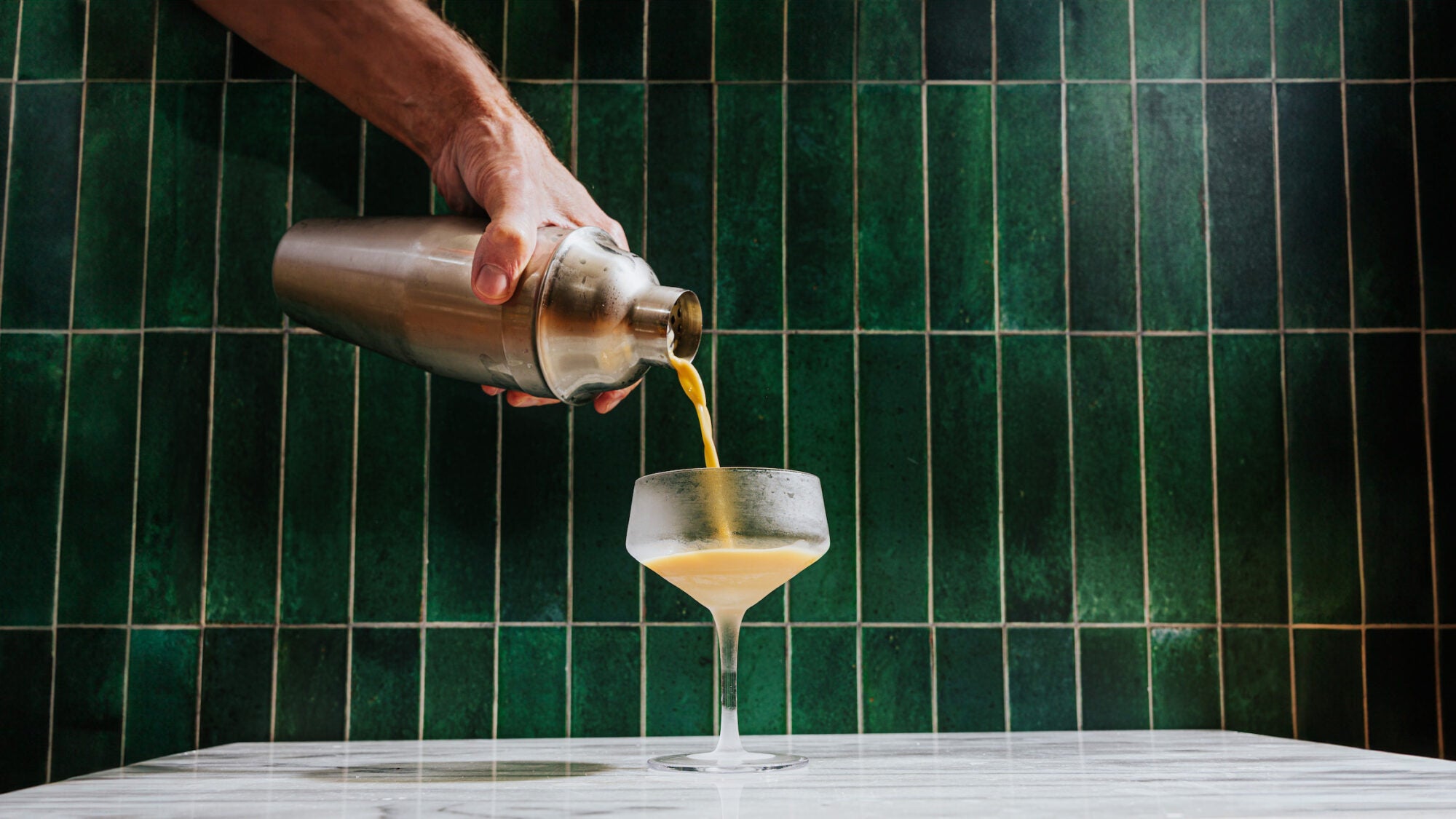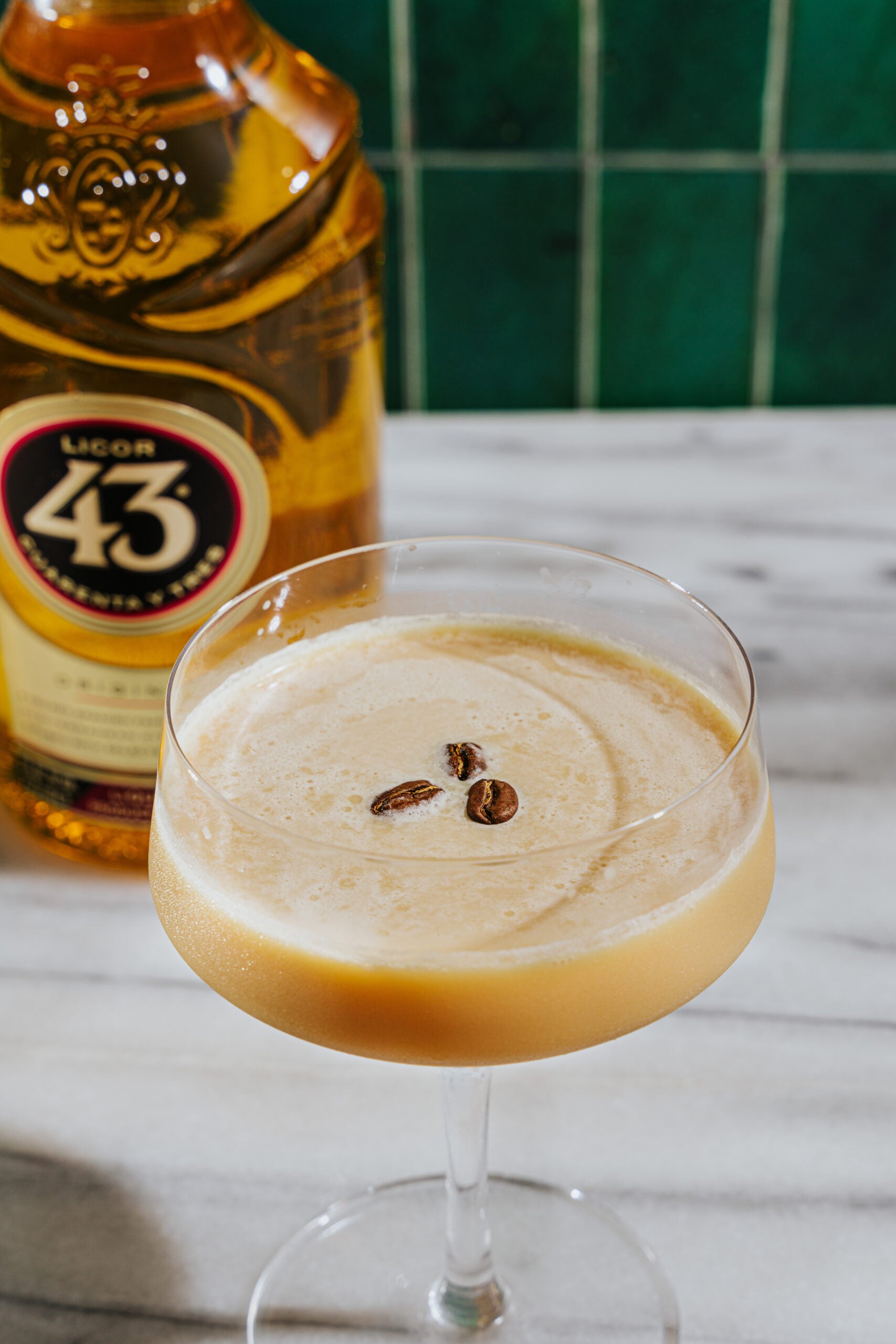
A fixture of bars and cafés in Mexico, the mix of filter coffee and Licor 43 puts some pep in our drinking routine.
Like dance crazes and pop music (think the Dougie, or chillwave), the drinks we drink are subject to various trends and vogues. And for coffee cocktails—a subgenre of a subgenre—all it takes is a photo of, say, Timothée Chalamet and Larry David drinking espresso martinis for the whole thing to blow sky-high. This is predictable, and perhaps annoying, but you can’t really fight against it—and so there are three espresso martini variations in But First, Coffee, the cookbook I coauthored dedicated to coffee’s surprisingly multi-hyphenate role in the modern kitchen and bar.
Sadly overlooked, at least by certain cliques, is the beautiful and endlessly adaptable carajillo. “It’s slept on, honestly,” says Angel Medina, proprietor of Portland, Oregon’s República & Co. restaurant group. “You see it at every little café and bar in Mexico, but rarely up here.” At its core, the carajillo is a two-part coffee cocktail, composed of espresso (typically) and Licor 43 (always)—an amber-hued Spanish liqueur of Cuban origin with sweetness and surprising complexity that’s not unlike a slightly sweeter yellow Chartreuse. There’s vanilla, there’s citrus, there’s spice, and there is an undefinable endless herbaceousness to it, owing to a closely guarded secret family recipe.

Like any two-part cocktail—the martini, say, or the gin and tonic—the carajillo can be riffed into maximalist fantasia or otherwise tweaked and refined into something approximating personal expression. You can make it with ice or serve it warm. You can add other spirits (rum or mezcal) or keep it plain. You can shake the shit out of it and source hyperlocal single-origin espresso, like they do at Cicatriz in Mexico City, or you can turn it into an over-the-top luxury dessert, like they do at Grand Velas in Puerto Vallarta.
For a fun at-home version, I started playing with Licor 43 as the base spirit, infusing that with a blend of Latin American coffees roasted by Yes Plz, a Los Angeles–based coffee company run by Sumi Ali and Tony “Tonx” Konecny. I allowed 50 grams of coffee to infuse in a Mason jar filled with one 750 ml bottle of Licor 43, allowing it to rest for 48 hours before straining it into a clean jar. The sugars in the liqueur extract essential oils and aromatics from the coffee beans, resulting in a deep coffee flavor locked inside the spirit. This added coffee flavor means you can get around using espresso (not everyone has a machine at home) without sacrificing the important coffee-forward notes of the drink.
From there, I brewed filter coffee (more Yes Plz) and split a shot of coffee-infused 43 with yellow Chartreuse, whose herbal profile and complex sweetness mirrors the Spanish stuff in unexpected ways. Add a splash of cream, shake over ice, and serve floated with three coffee beans, per tradition. If you can’t find yellow Chartreuse, Strega works really well, too. It’s complex, it’s deep, and it’s not too sweet. This is the carajillo’s moment, dammit. Let’s see more variations on the form.